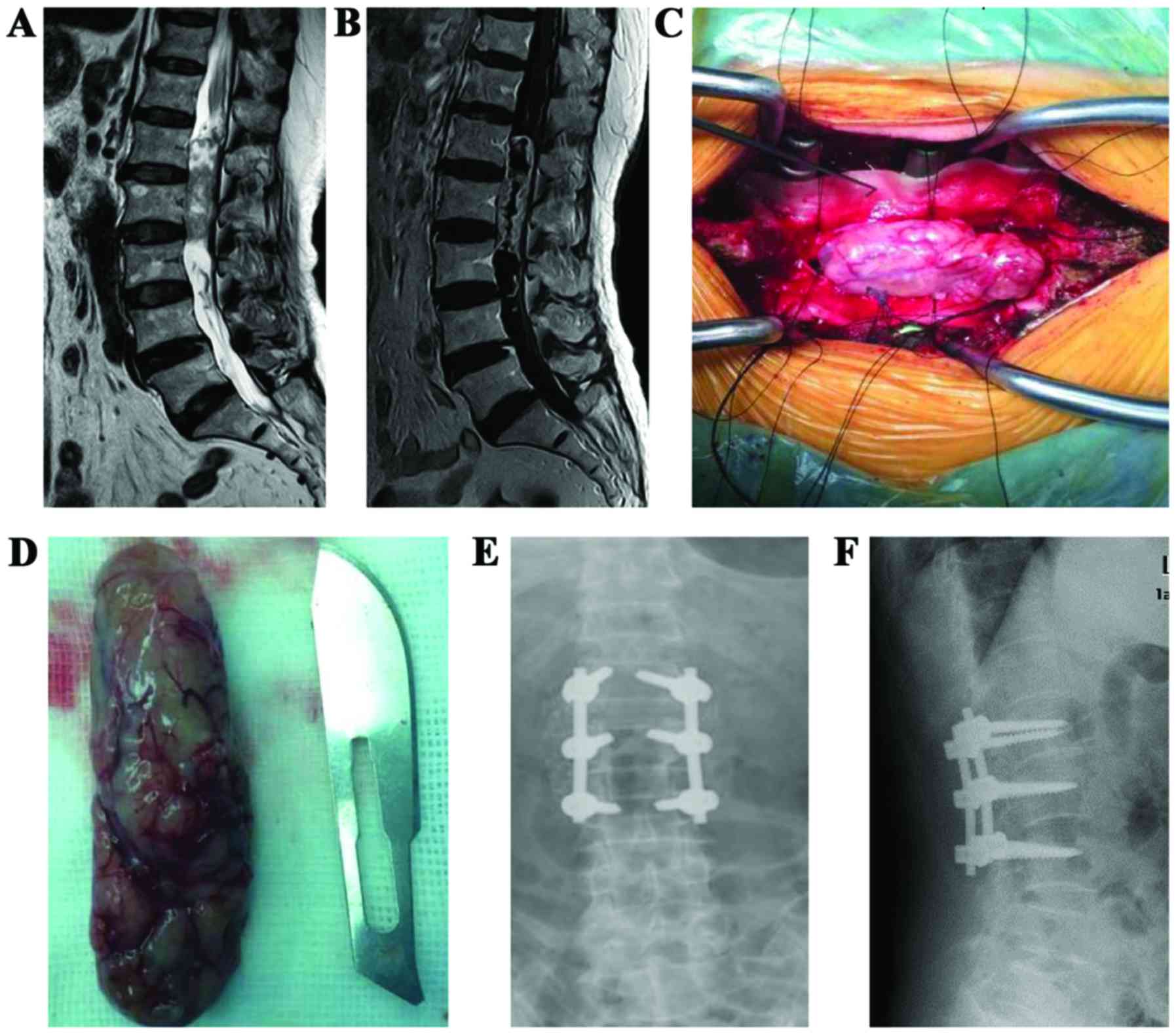Experience of operative treatment in 27 patients with intraspinal neurilemmoma
- Authors:
- Published online on: August 23, 2017 https://doi.org/10.3892/ol.2017.6799
- Pages: 4817-4821
-
Copyright: © Li et al. This is an open access article distributed under the terms of Creative Commons Attribution License.
Metrics: Total
Views: 0 (Spandidos Publications: | PMC Statistics: )
Total PDF Downloads: 0 (Spandidos Publications: | PMC Statistics: )
Abstract
To investigate the clinical outcomes of posterior laminectomy on intraspinal neurilemmoma. Twenty-seven patients with intraspinal neurilemmoma admitted to the Second People's Hospital of Changzhou Affiliated to Nanjing Medical University from January 2010 to October 2015 were selected, and they received posterior laminectomy, and there were 5 patients whose nerve root and tumor were removed together because they could not be separated; 17 patients receiving total laminectomy or semi-laminectomy combined with facetectomy on the affected side were treated with spinal dynamic pedicle screw fixation or replantation of lamina or bone graft fusion and internal fixation. The patients were followed up regularly to observe the clinical outcomes after operation. The spinal stability and bone graft fusion were observed via X-ray film in review. Whether there was tumor recurrence was observed via MRI in review according to the individual condition. The operation time was 2.5-8 h (4.2 h on average). The intraoperative blood loss was 420-1,500 ml (760 ml on average). Tumors in 26 patients were totally resected, and tumor in 1 patient was partially resected due to tumor tissue invasion against the anterior sacral vascular plexus. All patients were pathologically confirmed as neurilemmoma after operation. Ten patients suffered from cerebrospinal fluid leakage in different degrees after operation. During the follow-up for 6-75 months after operation, clinical symptoms and neurological functions of all patients were significantly improved; there was 1 case of tumor residual and no recurrence. During the follow-up, the internal fixation in all patients receiving internal fixation of spine was stable with no vertebral instability. Posterior laminectomy can achieve satisfactory clinical outcomes in the treatment of intraspinal neurilemmoma. Internal fixation is needed to reestablish spinal stability during operation for those patients with great damage to spinal stability.










